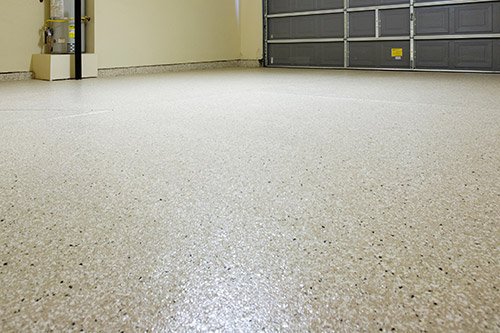Knowledge
Protecting a Concrete Surface With Polyaspartic Coating
Protecting a Concrete Surface With Polyaspartic Coating
The world of concrete is full of topical products meant to extend the lifespan of a concrete surface. One of the newest and most exciting such products is a class of floor coating known as Polyaspartic Coatings. If you would like to expand your knowledge of the ways you can prolong the lifespan of your concrete floor, read on. This article will introduce you to the world of Polyaspartic Coatings.
Polyaspartic coating - often simply referred to as polyaspartic - belongs to the category of elastomer known as polyurea. Polyureas are two-part chemical systems, in which a hard durable coating is formed through the mixture of a resin and a catalyst.
The trouble with most polyureas is that they have a very short pot life - in other words, they begin to harden within seconds of being mixed. This makes it difficult for non-professionals to utilize traditional polyureas as a coating for floors, since installation can hardly be accomplished in such a short window of time.
Polyaspartic represents a key advance in this regard, with a pot life of anywhere between five minutes and two hours. This is due to the inherent chemical properties of the substances used to compose a polyaspartic coating.
Fortunately, unless you happen to be a chemical engineer, you don't need to worry much about this. Instead, the important thing to appreciate is that the nature of polyaspartic gives floor technicians more than enough time to ensure that it is thoroughly and evenly applied to your concrete floor.
Benefits of Polyaspartic
Polyaspartic presents a number of key benefits that make it especially exciting compared to older methods of coating a concrete floor. For one thing, polyaspartic is a UV-stable substance. That means that the hard coating will not yellow with age. In addition, it will act to protect any underlying coatings from UV rays, ensuring that their appearance is also not altered.
Polyaspartic is also safe against discolorations caused by contact with water that percolates up through the concrete. Such moisture migration can cause many traditional floor coatings to develop whitish discolorations.
Polyaspartic is also highly resistant to most forms of top stains, especially those caused by oils and fats. This makes polyaspartic a great option for coating concrete kitchen floors.
Polyaspartic is also easier - and safer - to work with than many other floor coatings. That's because it has very low levels of volatile organic compounds. Known as VOCs, these potentially harmful compounds are responsible for the strong chemical smell of many floor coatings.
Additives for Traction
Polyaspartic is generally applied in at least two coats. The first coat acts something like a primer, thus promoting the strongest possible adhesion for the top coat. Here it is important to acknowledge that, depending on your particular application, polyaspartic coatings do present one potential drawback where traction is concerned.
You see, polyaspartic floor coatings tend to become quite slippery in the presence of water. For this reason, when installing polyaspartic coatings in such places as kitchens, patios and even garages, it is common to sprinkle certain additives into the top coat. The idea is that these will provide a somewhat coarser texture, thus negating the poor traction of the polyaspartic itself.
There are two main types of additive used for this purpose: vinyl color flakes and slip resistant aggregate. In most cases, slip resistant aggregate simply boils down to some type of sand or finely crushed gravel. Broadcast across the surface of the still wet topcoat, it yields a coarser texture.
Vinyl color flakes, in essence, are simply paint chips. They come in a wide variety of sizes, although 1/4" flakes are generally considered to be a good size. Even in situations where traction is not an issue, vinyl color flakes are often added to a polyaspartic coating in order to yield more interesting aesthetic results.
Bottom Line
Concrete is an excellent flooring material, being both durable and relatively inexpensive. Yet that doesn't mean that a concrete floor isn't still susceptible to damage if not protected adequately. If you would like to learn more about what polyaspartic coating can do to extend the lifespan of your concrete floor, don't hesitate to contact Huisins Coating for more information.

CATEGORIES
KNOWLEDGE
CONTACT US
Name: Lily Lu
Mobile:86-13922763266
Tel:86-20-38993165
Whatsapp:8613922763266
Email:lilylu@huisins.com
Add:Room 206,Building 21,LongTeng Xing Cheng,No.68 LongTeng South Road, DongXiao Town, XinLuo District,LongYan City,FuJian Province.China

